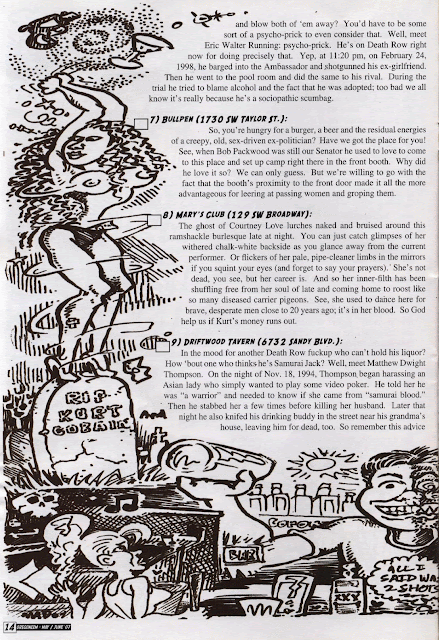But for me, I think it will always be "The Miracle Monopoly Cheating Kit," by Christopher Cerf, from Issue #38 (May, 1973) of National Lampoon -- the "Fraud" issue.
 It was inspired. Because sometimes capitalism needs -- you know -- a little help. A little nudge forward. An edge.
It was inspired. Because sometimes capitalism needs -- you know -- a little help. A little nudge forward. An edge.Okay, fraud.
The kit contained deeds for fake properties, which could be mortgaged for quick cash or used as trading stock in real estate swaps (in this, the MMCK was a quarter-century ahead of the game).
It also had fake Chance and Community Chest cards creating ridiculous advantages for the cheater ("Go to Jail and Stay There for the Remainder of the Game") and calamity for opponents ("Railroad Strike Bankrupts All Your Railroads").
All of these hacks were printed on authentic paper and card stock, using the right fonts and ink colors. The MMCK even included an extra double-sided page of rules (justifying the gambits above, plus many more, for the would-be Master of the Universe) that would slip, undetectable, into the rule booklet provided with the game -- because control over the regulatory environment is also necessary for capitalism to flourish.
It even included fake bills in $1000 and $5000 denominations, useful in leveraging big real estate deals or simply for the psych factor (e.g., at a critical moment, interrupt and ask the player on your left to break a $5000 bill).
The kit also offered tips on such important matters as how to palm cards and slip them onto the Chance and Community Chest piles, as well as distraction techniques to cover moving larger forgeries on and off the board.
 My favorite cheat: The "Shoot the Moon" card, a Chance card (or maybe Community Chest -- alas, I can't find an image anywhere) that, when drawn, immediately turned the game into a race to see which player could go bankrupt first. It was a handy way to turn a bad situation to one's advantage, and once again a nice foretaste of 21st century change-the-rules capitalism.
My favorite cheat: The "Shoot the Moon" card, a Chance card (or maybe Community Chest -- alas, I can't find an image anywhere) that, when drawn, immediately turned the game into a race to see which player could go bankrupt first. It was a handy way to turn a bad situation to one's advantage, and once again a nice foretaste of 21st century change-the-rules capitalism.(And, while this doesn't have anything specifically to do with either fraud or Crime Week, here's the pewter penguin I like to bring out as my token in Monopoly while the other players are still squabbling over the cannon and the race car. Heh.)







 The avatar
The avatar



 Join the
Join the  From
From 


 Holiday schedules are going to bump up against the standard meeting schedules for Oregon and SW Washington chapters this month.
Holiday schedules are going to bump up against the standard meeting schedules for Oregon and SW Washington chapters this month. So wherever you are, join the Living Liberally gang for political conversation, drinks, and great films.
So wherever you are, join the Living Liberally gang for political conversation, drinks, and great films.